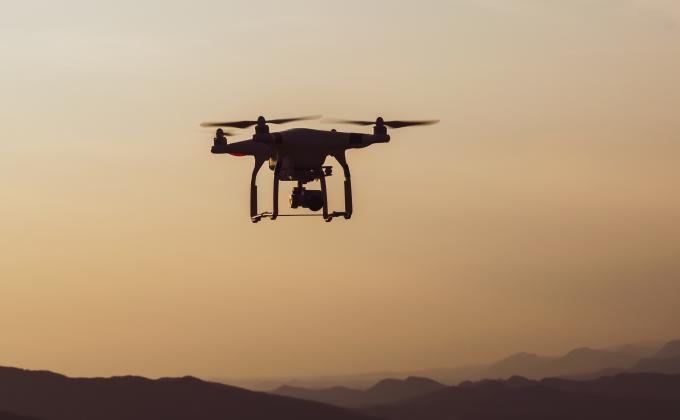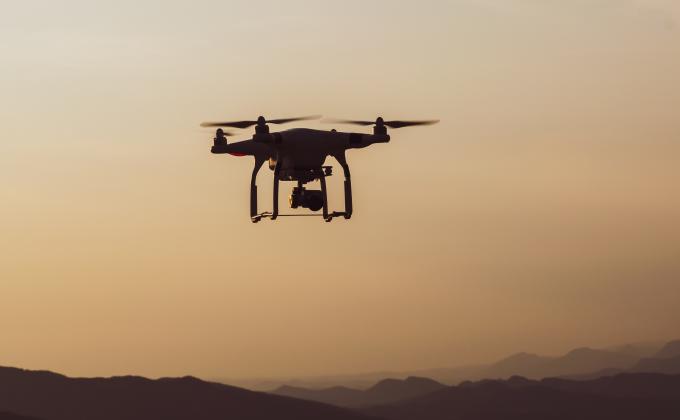Sunday, January 28 saw the first instance of American soldiers killed by an enemy drone attack, as an armed non-state group detonated an explosive-laden drone on an American outpost in Jordan. Since the attack – attributed to Iran-aligned Kataib Hezbollah, an Iraq-based group – there has been a significant consensus that such attacks are inevitable. Drone experts such as James Rogers and Dominika Kunertova suggest that it is a given that “the drone will always get through”, whereas Paul Lushenko notes such an attack was a matter of “when”, not “if.” Indeed, armed forces opposing non-state groups have long confronted the menace of drone attacks, with ISIS’ drones being described as the “most daunting problem” facing US-led coalition forces in 2016. Moreover, the widespread use of drones by Hamas during the 7 October 2023 attacks in Israel to strike observation towers to facilitate its armed incursions, the persistent attacks on shipping by Houthi forces, and the use of commercial drones by both sides of the conflict following the Russian invasion of Ukraine, seemed to give credence to these affirmations.
Despite this apparent consensus, there has been somewhat less attention to how specific drone threats develop, and which types of drone threats can be mitigated. Instead, until recently, a considerable part of the literature on terrorist use of drones focused on speculative scenarios. For example, Don Rassler’s landmark 2016 report detailed 15 ways in which violent non-state actors might seek to misuse drones for nefarious purposes. Yet, the question of how violent non-state actors develop drone programs, employ drones, and innovate has remained somewhat secondary. In 2022, we undertook a comparative research project studying five armed non-state groups based in the Middle East to address these questions. In this report, we argued that while commercial drone technologies are attractive to violent non-state groups because of their ease of procurement and use, terror groups differ significantly in how they establish their drone programs. In other words, there is considerable variation in the tactical, technical, and operational proficiency and capacity for innovation of non-state groups employing drones. Last Sunday’s attack provides a further indication that terrorist groups use of drones has become increasingly sophisticated and shows how tactical innovation allows them to attack fortified positions. This innovative use of drones can be attributed to an environment conducive to experimentation and learning by multiple drone-using groups; where new tactics, strategies, and approaches are quickly shared and repeated. This, in turn, presents a heightened risk to armed forces operating in the region, one which will persist as long as these environmental factors remain.
Innovations in drone attacks
In our study, we observed a wide variety of types of drones used, procurement networks, supporting infrastructure, and techniques. Accordingly, the type of threats posed by non-state actors use of drones varies between groups, locations, and targets. ISIS, while often cited as the preeminent non-state drone user, developed its own infrastructure, munitions, and aircraft without state patronage. As a result, the terror group used drones both as a powerful tool within its propaganda machine and to conduct attacks by using large numbers of small quadcopters to drop modified grenades. In this, it differed from the large number of drone-using Iran-supported groups (such as Hamas, Hezbollah, and Houthi forces), which tended to privilege pilot-to-target attacks, whereby drones loaded with explosive charges crash into – or near – a target and explode. Drones which are capable of carrying larger payloads and have a longer range are typically favoured for this type of attack and require variable level of skills. Yet, even between the three Iran-supported groups included in our report, there was significant variation in the scope of pilot-to-target attacks, their complexity, and the equipment used.
There is no conclusive information yet about the type of drone used in last Sunday’s attack, though officials have confirmed it was a ‘pilot-to-target’ attack which struck living quarters. The high casualty count of 3 dead and at least 47 injured is consistent with that of previous ‘pilot-to-target’ attacks against non-American military targets, which can be highly deadly depending on payload, targets, and the number of drones involved. For example, a similar attack against a graduation ceremony at a military college in the Western Syrian city of Homs killed 89 and wounded 300 others.
While ‘pilot-to-target’ attacks are not new, how the explosive-laden drone avoided sophisticated air defences appears to be. American officials have suggested that attackers may have deliberately flown their drone near a returning American drone in order to benefit from confusion among air defence forces. If this is confirmed, it might point to a new variation on a tactic used by multiple non-state groups in exploiting uncertainty about the identity of drones to their advantage. If this mix-up and the deliberate use of this tactic by attacking forces were confirmed, it would suggest significant tactical innovation by attackers in response to American practices.
Drone attacks are indeed difficult to stop, with these difficulties arising from a variety of sources. Some attacks seek to overwhelm air defences through numbers – that was not the case here, despite two other drones being shot down. Others may use unexpected angles of attack to seek to circumvent air defences. What this attack shows, however, is that while the likelihood of offensive drones penetrating defences is heightened by the sheer volume of attacks, the central dynamic which may make attacks such as Sunday’s likelier lies in innovation by non-state groups in employing drones. Beyond proliferation in numbers of aircraft, tactical learning by attackers presents a particular challenge to air defences.
Terrorist groups often display remarkable innovation in their tactics and means of attack. Our study of terrorist groups’ drone programs reflected this tremendous capacity and willingness to innovate. Groups which used drones successfully not only acquired more and better drones, but also appear to have devoted a considerable amount of attention to observing and learning from their counterparts. In doing so, they have shown a capability to adapt to changes in defensive postures and responded through new technical and tactical actions.
The need to counter drone attacks
Countermeasures and responses to such drone attacks must therefore be mindful of this propensity for innovation. Beyond thinking about air defence systems, it is empirical knowledge about how groups such as Kataib Hezbollah use drones, what they seek to achieve through drones, and how they innovate in using drones which is key to countering the menace.
Finally, the large volume of ongoing American presence and military action (along with the presence of Iranian advisors embedded among Russian troops in Ukraine) provides an effective training ground to develop such learning. Iranian-aligned groups have been known to not only collaborate with their patron, but to share techniques and approaches among each other. As long as American forces are deployed in Syria, Jordan, Iraq, and Yemen, their presence will continue to provide enemy forces with opportunities to learn, test techniques, and innovate. Terrorist groups generally have a distinctive evolutionary advantage over bureaucracy-laden conventional militaries; this pace of innovation and adaptation is likely to remain a challenge in adapting and countering drone threats for American troops in the Middle East.
Returning to the notion that a deadly drone attack against American troops would eventually occur, the attack on Tower 22 is nonetheless striking in many regards. First, it demonstrates how quickly drone-using groups can adapt their tactics and techniques for pilot-to-target attack to circumvent countermeasures. Secondly, it further evidences the persistent threat of innovation by drone users in the Middle East and elsewhere, and the limitations of technological solutions in countering fundamental problems of tactical innovation.
This article represents the views of the author(s) solely. ICCT is an independent foundation, and takes no institutional positions on matters of policy unless clearly stated otherwise.
Photocredit: aapsky/Shutterstock








